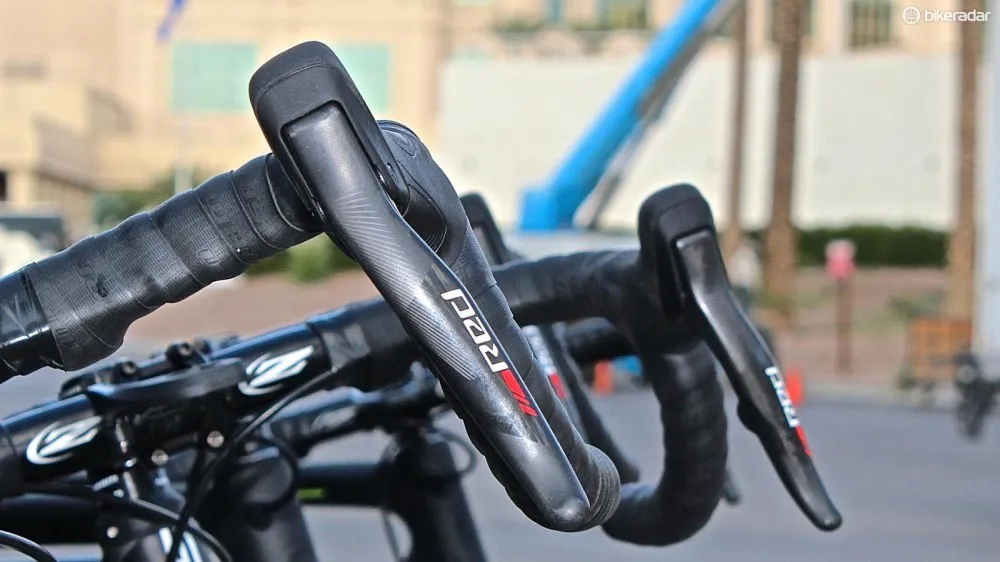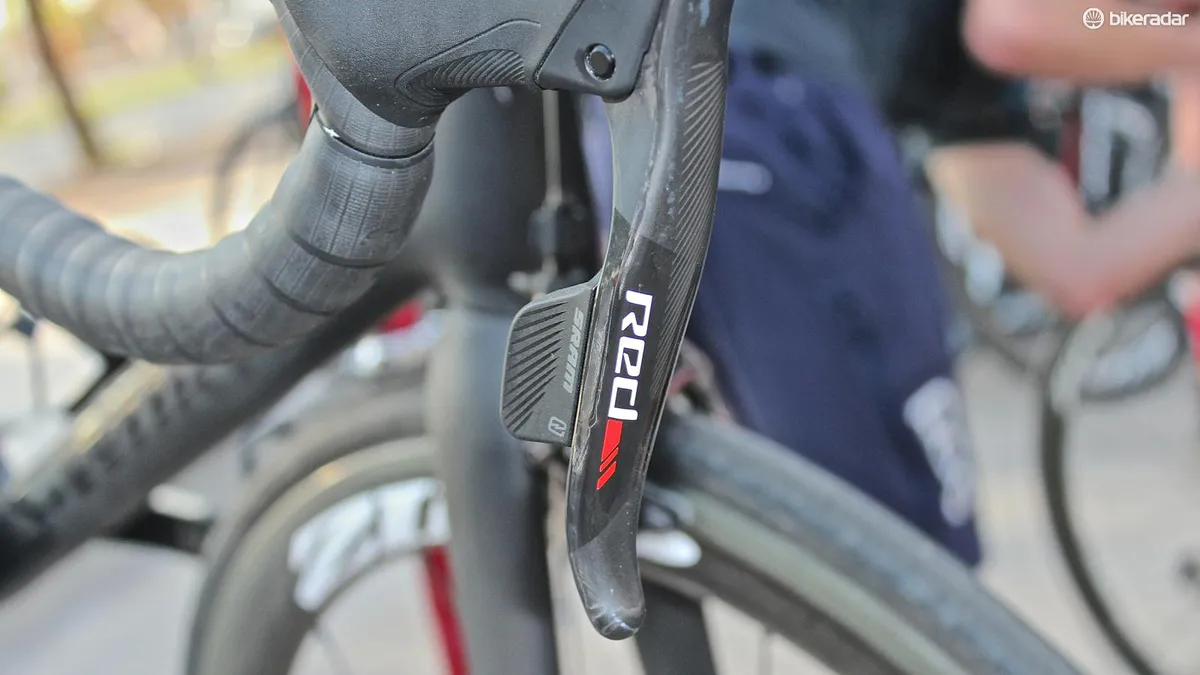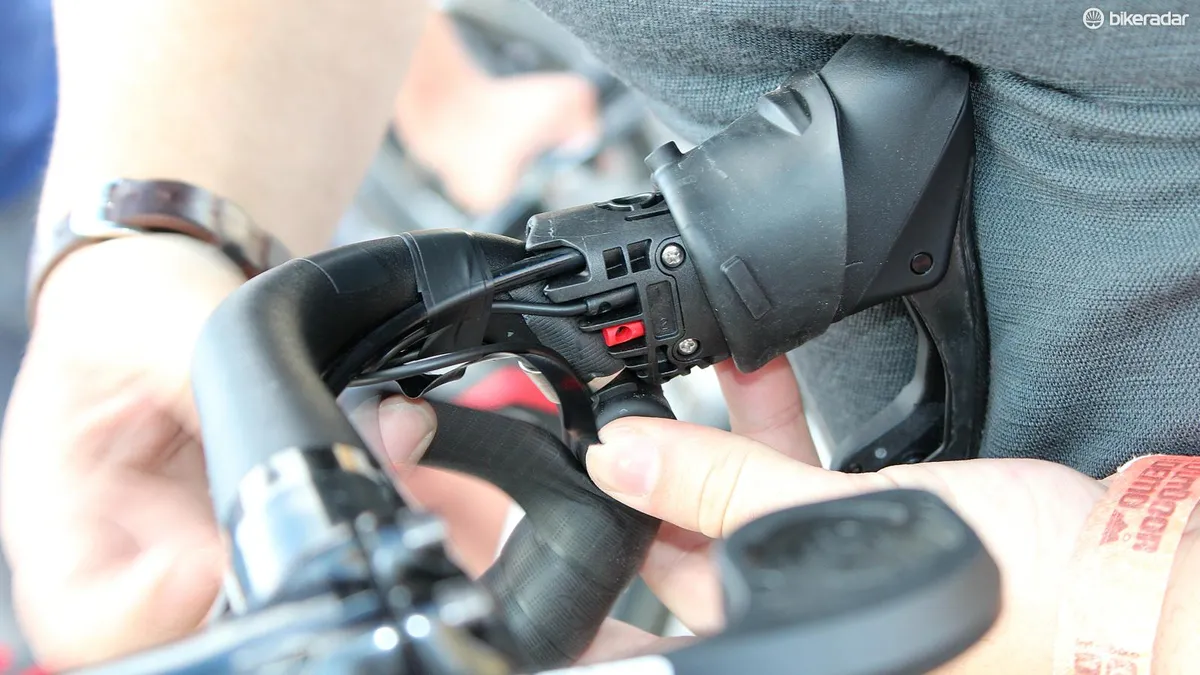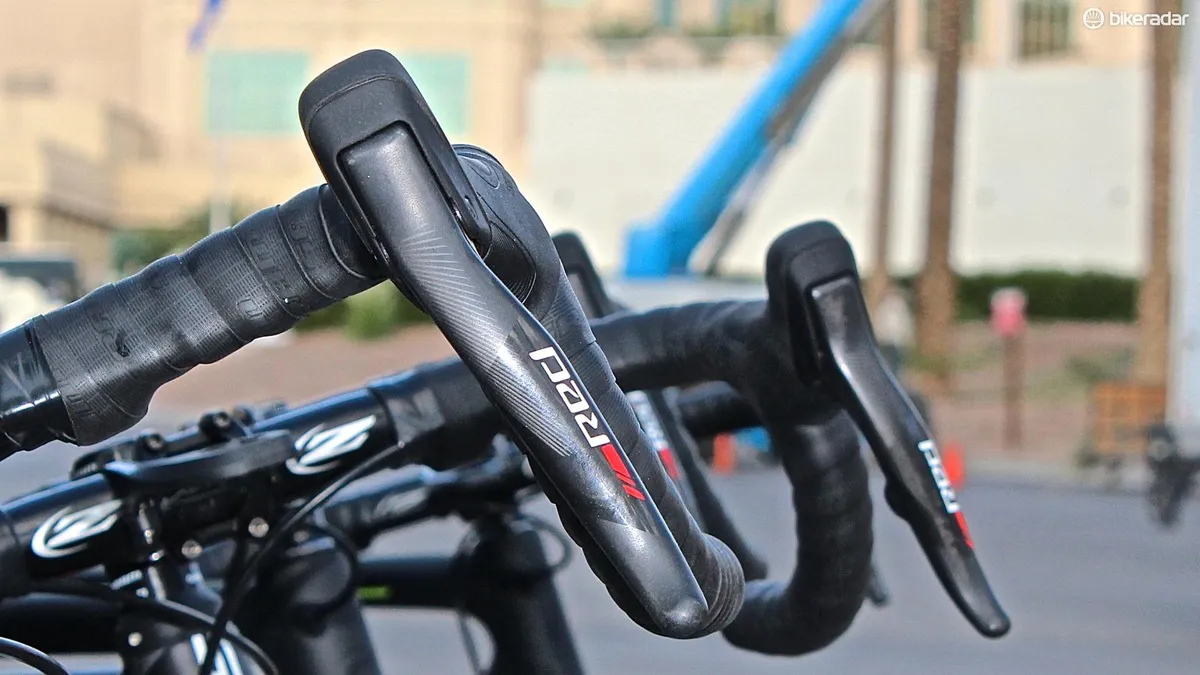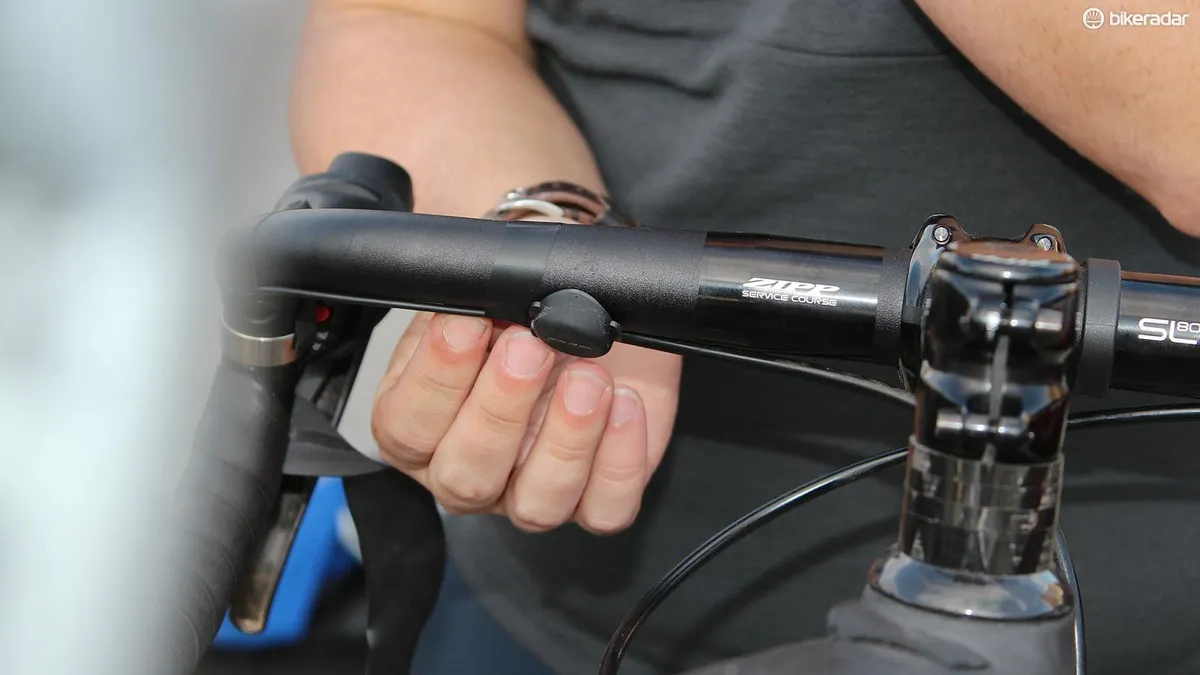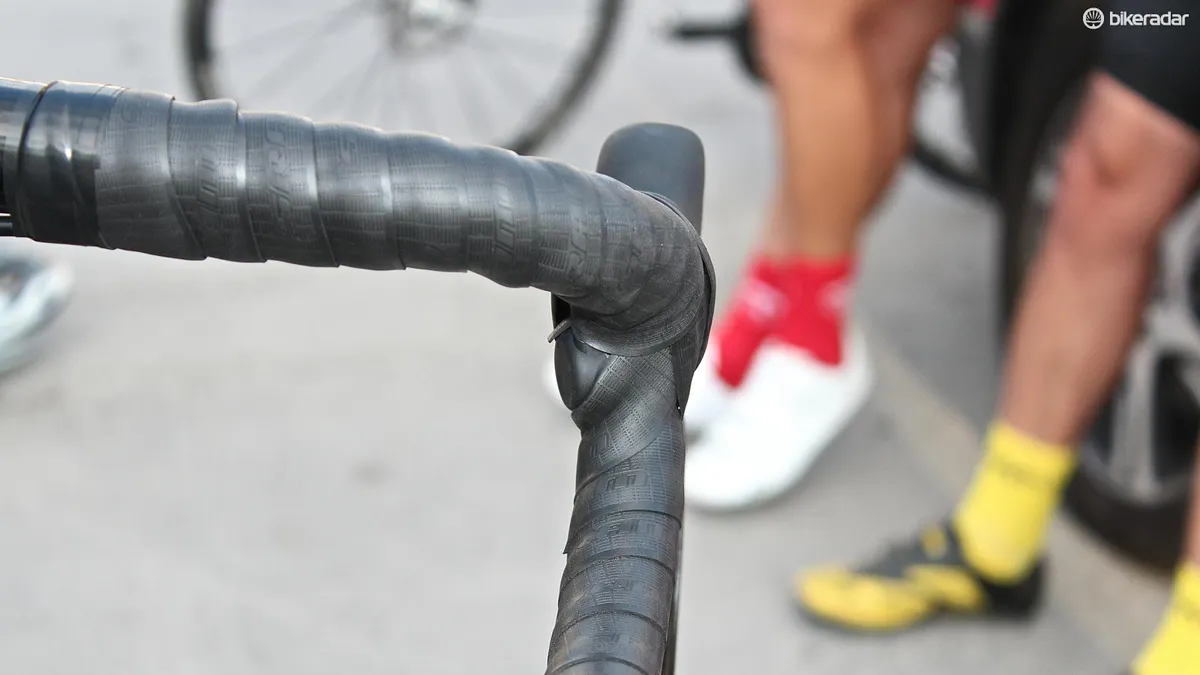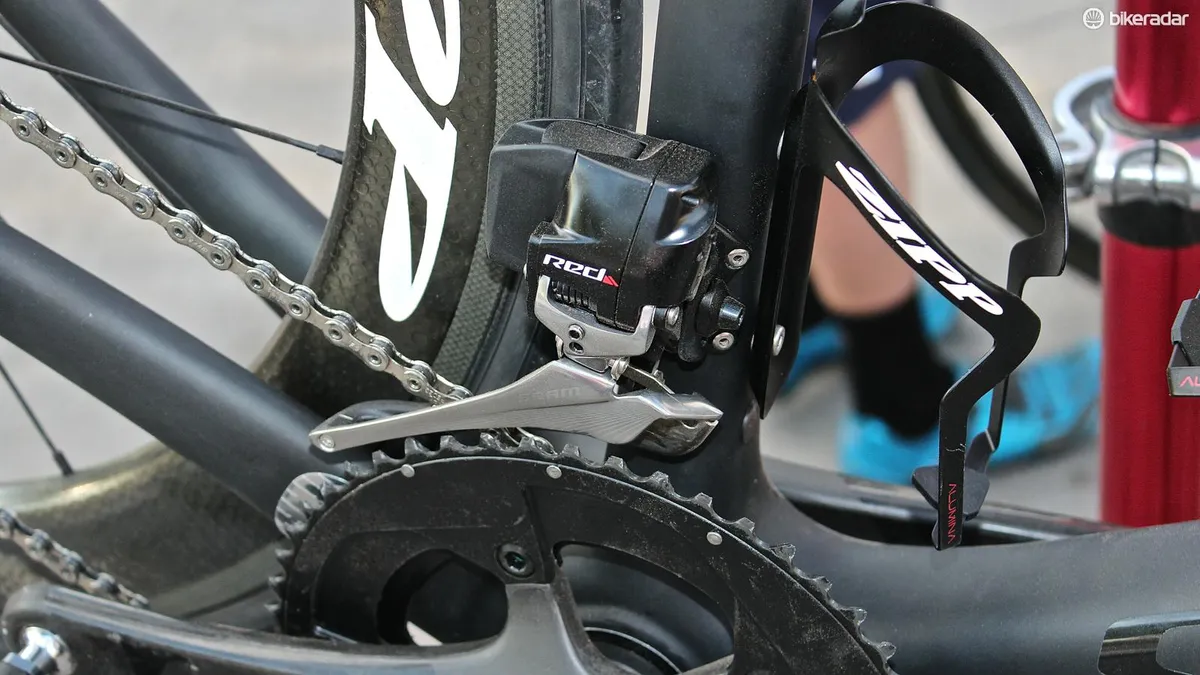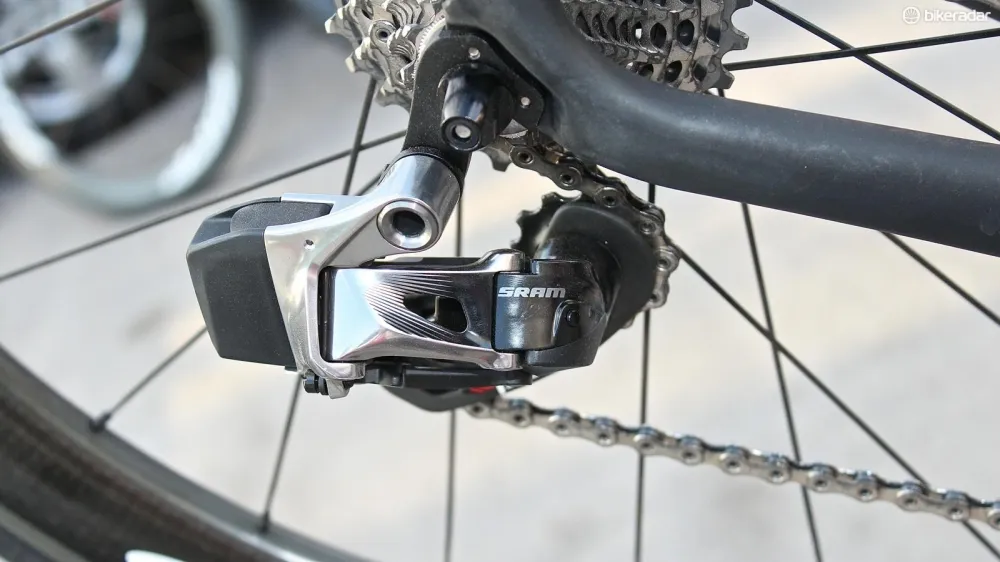SRAM Red eTap comes with a slight learning curve, but quickly delivers on simple functionality. Shifting at the levers and ‘Blip’ satellite buttons is easy, with positive tactile and audio feedback — click! — and a near impossibility of accidental shifts, regardless of conditions or bulky gloves.
Four BikeRadar riders have tested the wireless group now, and our opinions generally align: Red eTap works very well.
For complete details behind the group, read our news story. For our opinions on the functionality, read on.
- Highs: Simplicity in operation; cleanliness in setup (no wires or cables!); freedom in satellite shifter placement; no performance degradation from stretched or dirty cables; simplest system for newer riders; light, exchangeable batteries
- Lows: Initial learning curve; heavier, with slower rear derailleur movement than mechanical Red; choice of standard or compact crank, not one-size-fits all
Being third to market with an electronic drivetrain behind Shimano and Campagnolo came with challenges and benefits.
On the one hand, some 250 patents on electronic shifting already existed, fencing off many design styles. “When we printed them all out, we had 44 pounds (20kg) of paper,” said SRAM’s Michael Zellmann. “The stack was three feet (0.9m) tall.”
On the other hand, SRAM designers had the benefit of watching riders’ reactions to the functional peculiarities of Shimano’s Di2 and Campagnolo’s EPS electronic systems. For instance, one gripe against Di2 has been the muted tactile feedback. Another complaint has been the occasional difficulty in differentiating between the two smaller shift buttons, especially in the cold, over rough surfaces or with gloves on. Thus, Red eTap has more of a snap when shifting, plus a single, big paddle on each side.
SRAM etap wireless - ride impressions
Out on the road, shifting is simple: press the right lever and the rear derailleur moves outboard to the right; press the left lever and the rear derailleur moves left. Press both and the front derailleur shifts.
On one of the test rides, I rode for a while in thick winter lobster mitts. When the only task is pressing a single lever — not trying to differentiate between two buttons or even two mechanical levers — shifting is pretty simple. As one rider pointed out, you can shift with a water bottle if you want. It’s a physical impossibility to shift the opposite way of what you intend.
Blips — stick ’em wherever
One key benefit of electric shifting is the ability to shift from anywhere. On time trial bikes this change has been a revelation; shifting at the brake levers and the extensions is a reality for the first time. On road bikes, the change isn’t quite as drastic but, in my mind, just as important.
While Shimano has tiny sprint shifters (with short wires that limit reach) and a large, two-button climber switch, SRAM goes with the one-circular-button-fits-all approach, with Blips that can be positioned wherever you like, under or over the bar tape, with up to two on each side.
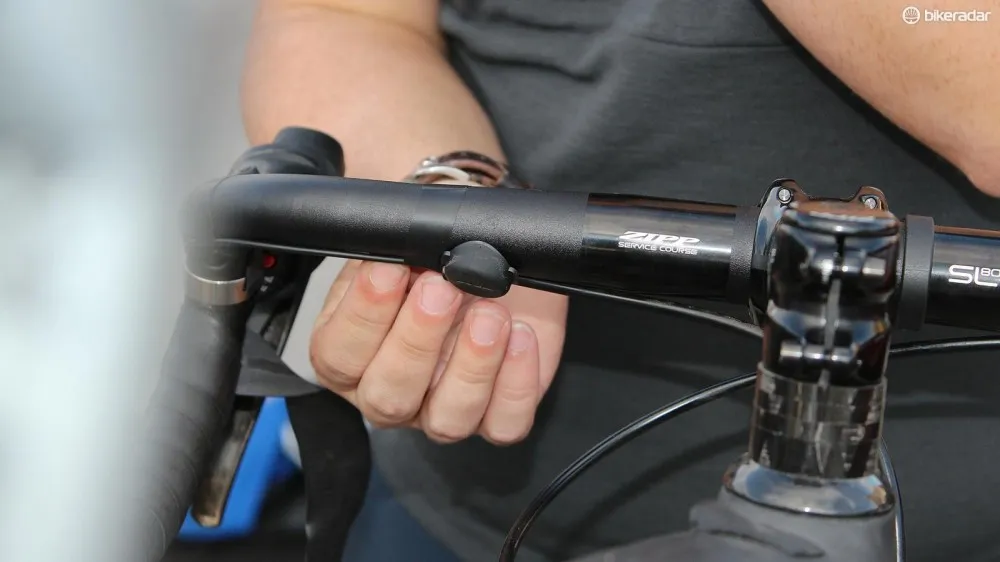
I was a little skeptical about the size of the Blips, which are about 2cm wide. I generally like the size of the tiny Di2 sprint shifters, but occasionally my thumb will bump them accidentally and trigger one or multiple shifts. With the Blips, since the button sits down inside a cylinder, you really can’t accidentally bump it.
Most of us enjoyed having a set of Blips on the underside of the bar tops, so we could shift with our thumbs or index fingers. “It almost feels like cheating it’s so easy,” one test rider said.
I also rode with Blips set up where Shimano puts its sprint shifters, on the bar just underneath and inboard of the hood. In this way, you can shift with your thumb knuckle. This configuration isn't as easy to shift as the Di2 sprint shifter, which just requires a gentle nudge, but on the other hand, you can wrap your fingers around the button and not accidentally shift, even when rattling over rough surfaces.
No skips – slower upshifting than mechanical Red, but smooth across the board
We tested with a few hundred kilometers of normal riding and some antagonistic shifting, such as moving up and down the cassette under full power. In that case, the system is a little noisy as you’d expect, but it would not flinch or skip.
The rear outboard shifts are a touch slower than mechanical Red. SRAM engineers say shift speed was studied at length, and the final speed was determined based on chain management and battery considerations. Some riders found it to be smooth and quieter; I’d prefer the faster speed of mechanical Red. The difference is just a fraction of a second, though. The shift speed is not adjustable.
One concept Shimano introduced with its Di2 system was the ability to shift from the small ring to the large ring under power, such as when you’re cresting a hill and trying to keep contact with a fast group. eTap won’t go along with this chain-bending program; you have to back off just a touch for the derailleur to push the chain onto the front ring.
Holding down either lever slides the chain methodically across the cassette. As we settled in with the system, we became comfortable with shifting the front and rear simultaneously. You can be holding one lever down to move the rear, then tap the other lever to engage the front.
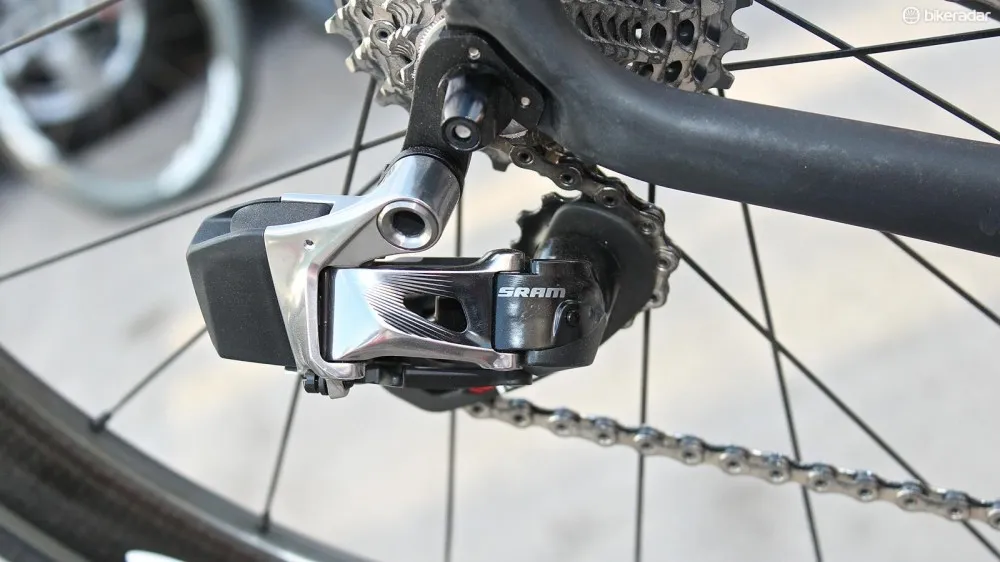
Battery flips
I have been riding Shimano Di2 for about two years and generally love it. But getting caught out with a dying battery sucks. Shimano has a pretty good solution; when the battery starts to go, the front derailleur stops functioning — giving you a clear warning plus leaving you with about 100 rear derailleur shifts.
I don’t have too much experience with Campagnolo’s EPS system, but I did get stuck in a single gear at the New York Gran Fondo when rain short circuited the battery. (To be clear, this experience was on the original external-battery system in 2013, not the current internal-battery EPS. Also, Campagnolo mechanics found the NYGF battery to have a crack in it, likely from shipping, and Campagnolo claims that its EPS system is waterproof barring such mechanical damage.)
SRAM’s two-battery system seems to be the best thus far. The interchangeable batteries snap on easily, and are light enough (24g) that you could easily carry a spare in your saddle bag.

LED lights on the shifters and derailleurs give you a warning when battery life is running low. Green means full charge of 50-60 hours. Red means 5-15 hours left. And a blinking light means less than 5 hours.
While Garmin and SRAM haven’t finalized the details, eTap’s ANT+ compatibility means a low-battery warning on your Garmin will be a reality soon. Gear-indicator graphics on Garmin Edge head units are also in the works; at least one SRAM employee is testing this now.
Existing pieces and weight comparisons
The marquee electronic shifters and derailleurs are matched with current Red cranks, chain and brake calipers. The sharp-looking Red crank weighs just 557g. For now, SRAM still has standard 130 and compact 110 crank options; we’d like to see the brand follow Shimano, FSA and Campagnolo and adopt a single standard that works with all chainring sizes. The Red brake calipers are solid, but just shy of the current benchmark set by Shimano Dura-Ace in terms of total power. One big advantage SRAM has over Shimano, however, is the ability to incorporate a Quarq power meter neatly into the Red group; Shimano does not yet have a power meter.
In terms of weight, Red eTap is roughly 80 grams heavier than mechanical Red for comparably configured setups. Red eTap weighs a claimed 1,992g in BB30 or 2,096g in GXP for a complete group. Compare this to 2,047g for the Shimano Dura-Ace Di2 9070 group.
The full eTap group will retail for $2,758 / €2,691 / £2,059. You can also buy just the shifters and derailleurs to work with existing 11-speed SRAM components, with the 260g levers at $290 / £205 each, the 239g rear derailleur at $590 / £420 and the 187g front derailleur at $370 / £265.
We will update this review as we spend more time on the SRAM Red eTap group. Since writing this, SRAM eTap has been selected for a 2015 BikeRadar Editor's Pick Award - see more here.
